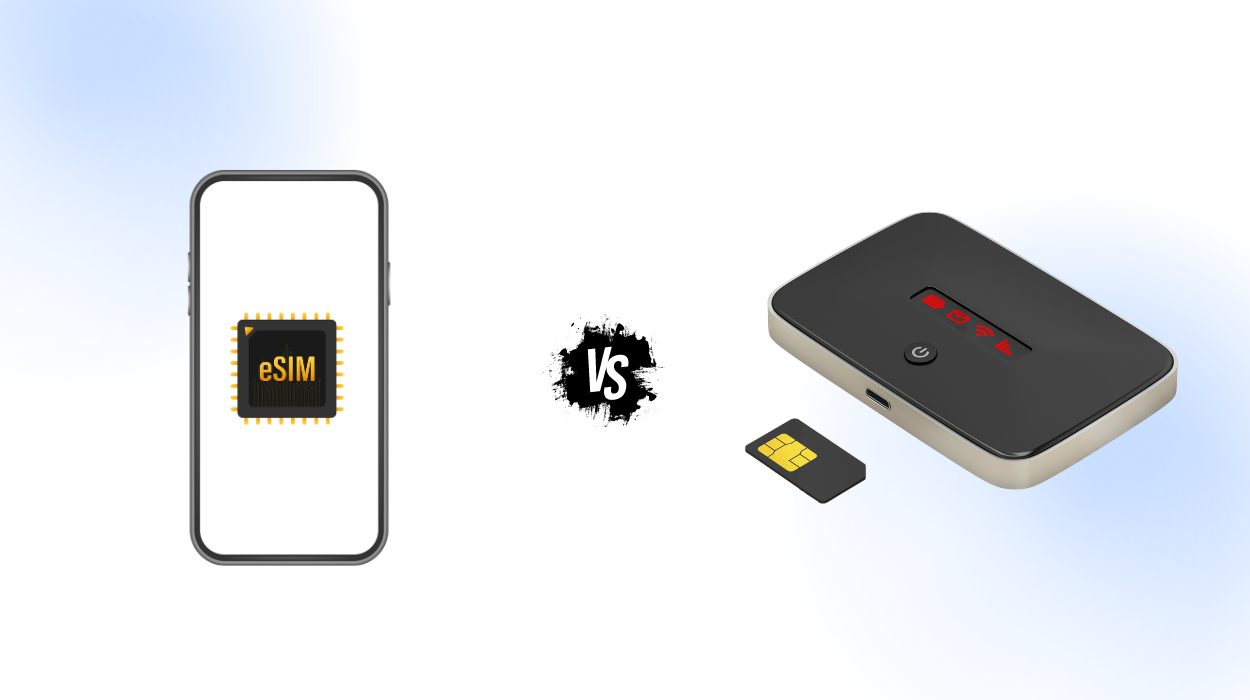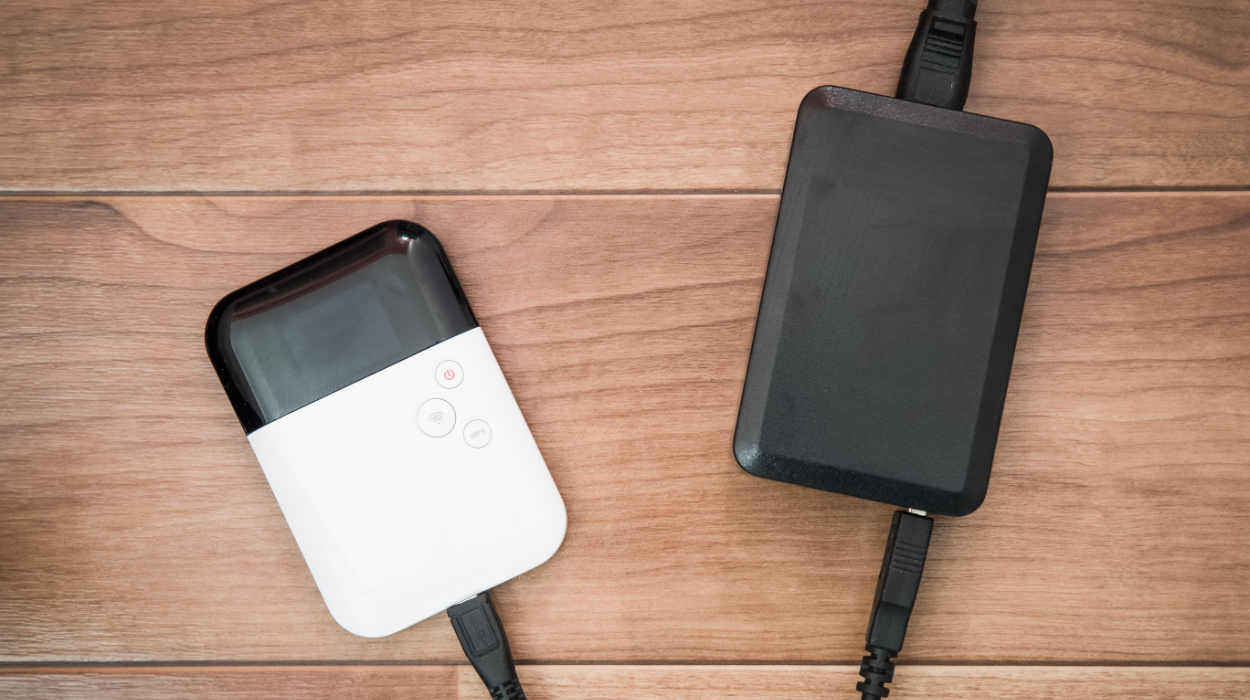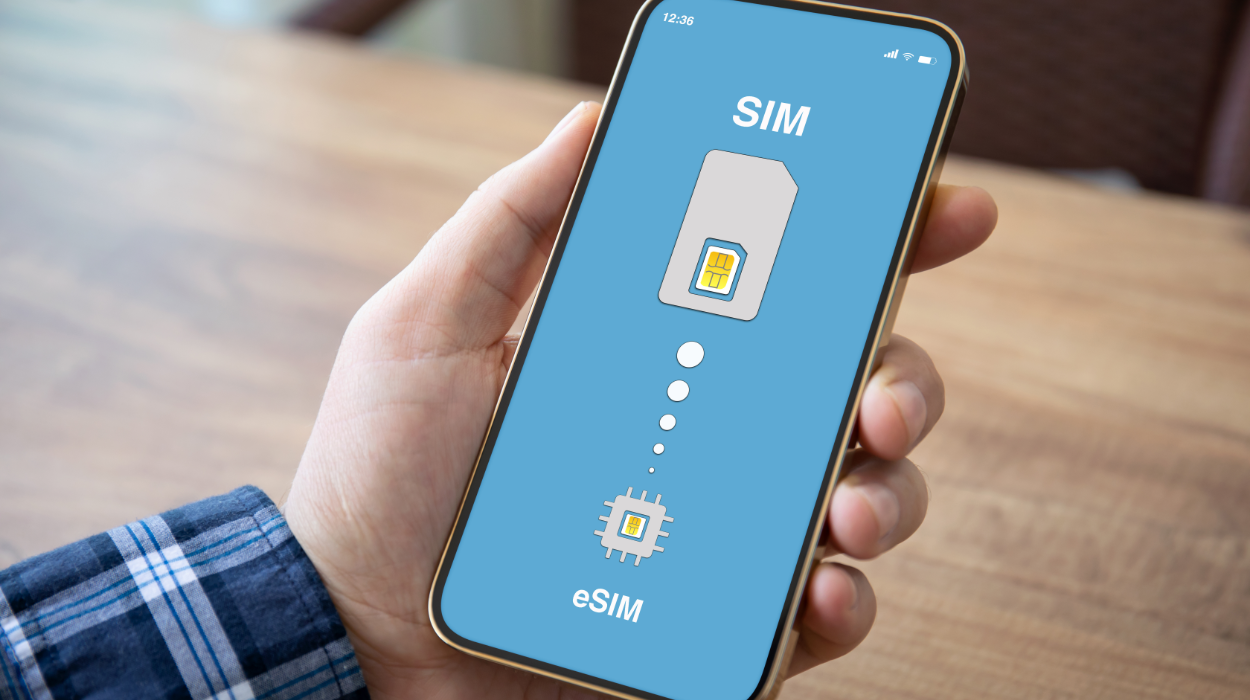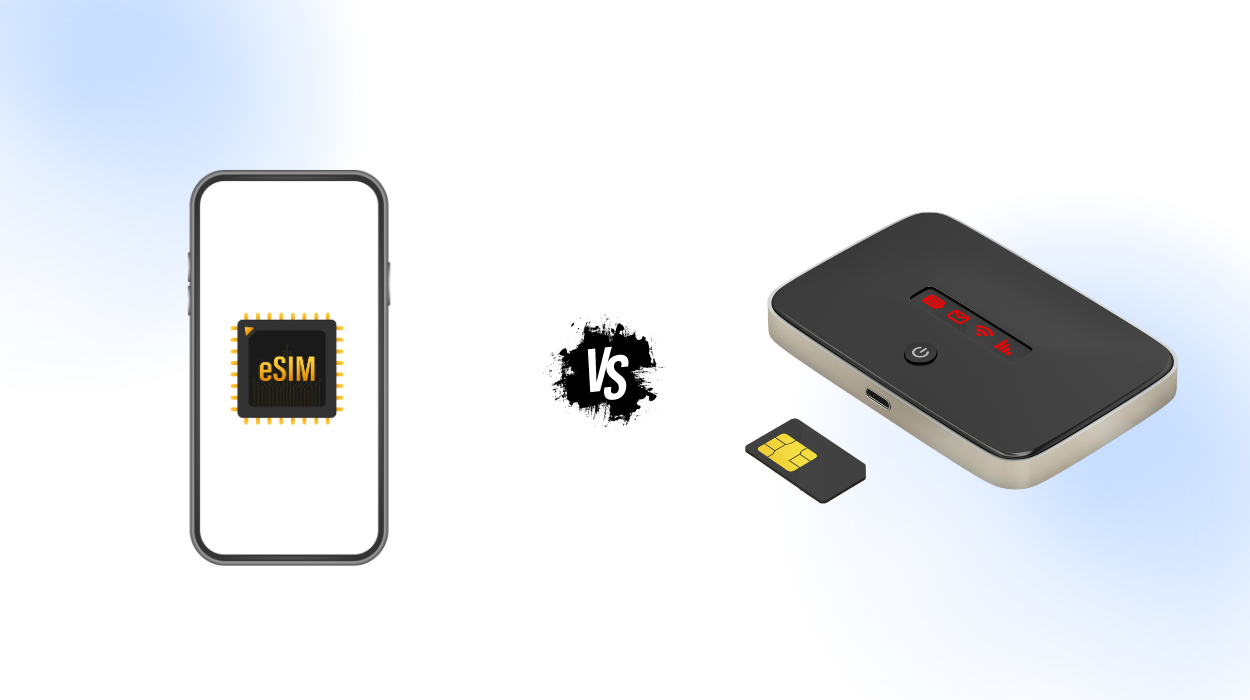 In an increasingly interconnected world, maintaining connectivity while traveling abroad has become more of a necessity than a luxury. Whether for business purposes, entertainment, or simply to stay in touch with loved ones, accessing the internet is crucial.
In an increasingly interconnected world, maintaining connectivity while traveling abroad has become more of a necessity than a luxury. Whether for business purposes, entertainment, or simply to stay in touch with loved ones, accessing the internet is crucial.
There are two popular options for international travelers seeking connectivity: Pocket WiFi and eSIM (electronic SIM). In this article, we will explore the advantages and disadvantages of each type to help you answer the question of whether to use eSIM or Pocket WiFi when traveling and decide which one is most suitable for your next adventure.
Pros and Cons of eSIM?
eSIM is the future SIM card technology that will be widely used on our mobile devices. In other words, it's the integrated SIM card technology in mobile phones, also known as eSIM technology.
With eSIM, you can activate data packages for multiple destinations without relying on mobile service providers, WiFi devices, or physical chips. Users can set up and connect wirelessly, allowing them to install eSIM and activate data packages anywhere in the world.
Until now, this has been the easiest and most convenient option to get data packages, which is why it has become the top choice for many travelers.
Advantages:
No need to carry additional devices: eSIM eliminates the need to carry additional devices for data usage. You just need to activate eSIM on your smartphone, saving luggage space and reducing the worry of remembering to bring other hard devices.
Convenience and flexibility: Buying and activating eSIM is usually a simple process that can be done online. This is very convenient, especially if you are a frequent traveler, as you can easily switch between different eSIM configurations for different countries. Unlike Pocket WiFi, you also don't have to worry about the Pocket WiFi device running out of battery while you're out and about.
Cost-effective: eSIM for travel often saves costs compared to renting Pocket WiFi devices, especially if you are traveling alone or if you need connectivity for an extended period.
Various options: Many eSIM providers like WoWeSIM offer various options - you can choose from regular data packages based on data volume, or you can also have the option of unlimited data for a specific period. This allows you flexibility in choosing the option that suits your travel needs.
Disadvantages:
Single-device connection: While travel eSIM works well for smartphones, they may not be suitable for travelers needing to connect multiple devices simultaneously. However, if your data package allows data sharing, you can essentially use your phone as a hotspot to allow other devices to connect to it and share data.
Compatibility issues: Not all smartphones support eSIM, so you will need a compatible device to use this option. Check the list of devices compatible with eSIM to see if your phone supports eSIM.
Pros and Cons of Pocket WiFi?
 Pocket WiFi, also known as MiFi or Mobile Modem, is a device small enough to fit in your pocket or backpack that you can take anywhere. It creates an internet connection through a private WiFi network that you can share with compatible devices nearby, such as tablets, smartphones, laptops, smartwatches, and even gaming devices.
Pocket WiFi, also known as MiFi or Mobile Modem, is a device small enough to fit in your pocket or backpack that you can take anywhere. It creates an internet connection through a private WiFi network that you can share with compatible devices nearby, such as tablets, smartphones, laptops, smartwatches, and even gaming devices.
The operation principle of Pocket WiFi is to access the internet through the SIM cards of mobile networks, so users need to ensure they have subscribed to an active data package. Web browsing speed can be 3G, 4G/LTE, or 5G depending on the selected package, and it has a battery life ranging from 8 to 13 hours depending on the device's capacity.
Advantages:
Multi-device connection: One of the biggest advantages of Pocket WiFi is its ability to connect multiple devices simultaneously, including smartphones like iPhones, Samsung, laptops, tablets, etc. This makes it a great choice for families or groups of travelers.
Coverage and reliability: Pocket WiFi devices usually provide reliable internet connections with good coverage in many countries. It can deliver strong and stable signals even in remote areas.
No need to change SIM cards: You can keep your regular SIM card in your phone when using Pocket WiFi. This means you can still receive calls and messages on your regular phone number without interruption.
Unlimited data: Pocket WiFi often comes with unlimited data, so you don't have to worry about using too much data or incurring unnecessary fees.
Disadvantages:
Need to carry additional device: Pocket WiFi will be a device that users need to carry with them whenever they travel and also always need to be fully charged. Additionally, you also need to take care of this device if you don't want to lose or damage it on every trip.
Rental or purchase costs: You may need to rent or purchase Pocket WiFi devices, which can increase your travel expenses.
Limited battery life: The battery life of Pocket WiFi devices can vary, and you need to remember to recharge the battery regularly. If you use Pocket WiFi, you'll want to make sure you have a spare battery or power bank that can charge the battery in case it runs out in the middle of the day when you're out.
People need to stay close to each other: To connect, you need to be close enough to the Pocket WiFi. Or if your group is separated during the trip, those who don't own or are near the Pocket WiFi won't be able to maintain the connection.
Choosing Between eSIM Travel and Pocket WiFi
If you know what type of trip you're considering, as well as your connectivity needs and personal preferences, you'll be able to easily determine the best option for your trip.
Features:
It can be seen that travel eSIM data provides fast, secure, and reliable connectivity without depending on mobile service providers or physical SIM cards. In other words, you can get it anywhere in the world by yourself and install and activate it in just a few minutes.
On the other hand, with Pocket WiFi, you will need to rely on service providers, smartphone devices, SIM cards, and data packages, but of course, if you need to connect multiple devices, it's an appropriate alternative.
In terms of availability, it cannot be denied that eSIM is the fastest way to get a data package for your trip, no matter where you are. Meanwhile, with Pocket WiFi, you have to receive or wait for delivery at an address that could be a home, office, hotel, etc.

Conclusion
The choice between eSIM and Pocket WiFi depends on your specific travel needs and preferences. If you need internet connectivity for multiple devices, will be traveling in a group, and are sure that you'll stick together throughout the trip, Pocket WiFi may be the appropriate choice. On the other hand, if you value convenience, cost-effectiveness, and have a compatible smartphone, eSIM for travel could be an excellent choice for solo travelers or those who want to streamline their travel devices.
In summary, the decision should align with your habits and travel goals, ensuring that you stay seamlessly connected and fully enjoy your trip, no matter where you are in the world.
If you need to use global esim while traveling, you can refer to the list of suitable eSIM countries that you're planning to visit on the WoW eSim website!
 FAQs
FAQs
What do I need to use eSIM data on my trip?
Answer: To get eSIM data for your next trip, you need a smartphone compatible with eSIM and check if your device needs to be unlocked for international use.
How many devices can connect to Pocket WiFi?
Answer: Typically, mobile WiFi devices allow you to connect simultaneously from 5, 10, 15, 15, 20, or more devices, but this depends on the capacity of the device you've chosen.
How long does the battery of Pocket WiFi last?
Answer: The battery can last from 8 to 15 hours. You can extend the battery life by using additional spare batteries.
Is eSIM better than physical SIM?
Answer: eSIM and physical SIM have many differences. Generally, eSIM offers more convenience than physical SIM cards, such as flexibility, better management, and space-saving. However, the choice between the two depends on the needs and preferences of each user.
Powered by Froala Editor
